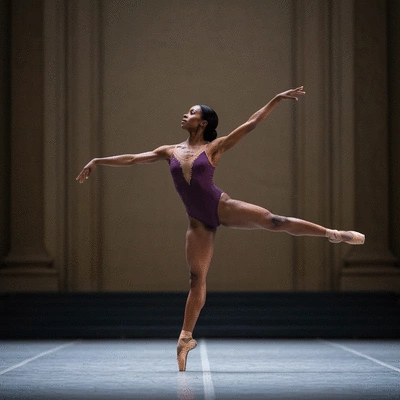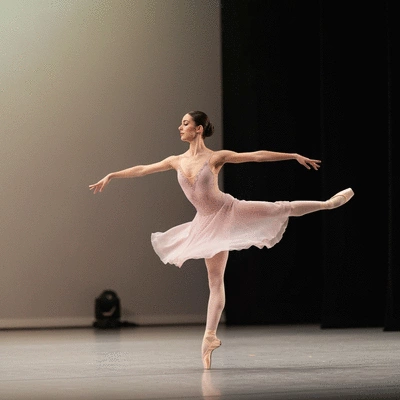Misty Copeland's retirement marks the end of an era, but her legacy continues to inspire countless dancers around the world. What lessons can we draw from her remarkable journey in ballet?
What You Will Learn
- Misty Copeland began formal ballet training at the age of 13, demonstrating that late starts can still lead to extraordinary achievements.
- She broke barriers as the first African American female principal dancer with the American Ballet Theatre, showcasing the importance of representation in the arts.
- Participating in dance competitions and festivals can provide crucial networking opportunities and skill development for aspiring dancers.
- Misty's focus on physical training and mentorship highlights the importance of discipline and guidance in achieving peak performance.
Misty Copeland's Journey: Milestones & Challenges
A visual summary of Misty Copeland's significant career achievements, the reasons behind her retirement, and the challenges she overcame as a trailblazing ballerina.
Key Career Milestones
- ★ Began formal ballet training at age 13.
- ★ Joined American Ballet Theatre's studio company in 2000.
- ★ Became first African American female principal dancer in 2015.
- ★ Debuted lead role in "Swan Lake" (2015).
- ★ Published bestselling memoir "Life in Motion".
- ★ Received 2014 Dance Magazine Award.
Retirement & Challenges
Reasons for Retirement:
- ● Desire to explore new avenues.
- ● Prioritizing health and well-being after years of physical strain.
Challenges Faced:
- ■ Navigating pressures as the first African American principal dancer.
- ■ Addressing stereotypes and biases in ballet.
- ■ Overcoming physical injuries.
- ■ Managing expectations as a role model.
Understanding Misty Copeland's Retirement from Ballet
Misty Copeland is a name that resonates with many, not just in the world of ballet but across various spheres of culture and art. As the first African American female principal dancer with the American Ballet Theatre, her journey reflects resilience and determination. In her career, she has broken barriers and redefined what it means to be a ballerina in today’s world, captivating audiences around the globe. But now, with her recent retirement from ballet, it’s time to reflect on her impactful journey and the legacy she leaves behind.

Who is Misty Copeland and Her Journey in Ballet
Misty's story is one of triumph against all odds. Born in Kansas City and raised in San Pedro, California, she discovered ballet at an early age but didn’t start serious training until she was 13. This late start could have been a setback, but instead, it became a part of her unique narrative. Her rise through the ranks of ballet has been nothing short of extraordinary, showcasing her talent and hard work.
- Misty Copeland began formal ballet training at age 13.
- She joined the American Ballet Theatre's studio company in 2000.
- In 2015, she became the first African American female principal dancer in the company’s history.
These milestones highlight Copeland’s relentless pursuit of excellence, underscoring her status as a pioneering figure in ballet. Her journey inspires aspiring dancers to embrace their unique paths, no matter when they start.
Key Milestones in Misty Copeland's Career
Throughout her career, Misty has achieved remarkable milestones that have not only marked her success but have also paved the way for others in the industry. Some key moments include:
- Debuting in the lead role of "Swan Lake" in 2015.
- Publishing her memoir, "Life in Motion," which became a bestseller.
- Receiving numerous awards, including the 2014 Dance Magazine Award.
These achievements showcase her contributions to ballet and her dedication to enhancing its visibility among diverse audiences.
Significant Achievements at the American Ballet Theatre
During her time at the American Ballet Theatre, Misty Copeland has become a transformative figure. She has performed in numerous prestigious productions, captivating audiences with her skill and artistry. Her performances in classical ballets, such as "Romeo and Juliet" and "The Firebird," have set high standards and offered new interpretations of beloved works. Her contributions have also been recognized by institutions like the Library of Congress, which houses her papers.
- Copeland’s performance in "The Firebird" was particularly noted for its emotional depth.
- She has participated in the ABT’s outreach programs, promoting dance education.
- Her collaborations with renowned choreographers have brought innovative works to the stage.
Through these achievements, Misty has solidified her status not only as a dancer but also as an advocate for diversity in the arts, inspiring future generations to dream big.
The Decision to Retire: Insights and Reflections
Retirement is never an easy decision, especially for someone like Misty Copeland, who has dedicated her life to ballet. As she steps back, it’s essential to understand the insights and reflections that shaped her choice.
Reasons Behind Misty Copeland's Retirement
Misty's retirement stems from various personal and professional considerations. At its core, it reflects her desire to explore new avenues while preserving her health and well-being. She has expressed that her body has endured a lot over the years, and prioritizing her health is crucial as she transitions into this new chapter.
Challenges Faced as a Trailblazing Ballerina
As a trailblazer, Misty Copeland has encountered significant challenges throughout her career. From navigating the pressures of being the first African American principal dancer to dealing with the physical demands of ballet, her journey hasn't been devoid of hurdles. However, it's these challenges that have shaped her resilience and advocacy.
- Addressing stereotypes and biases in ballet.
- Overcoming physical injuries while maintaining performance standards.
- Managing the expectations of being a role model in the industry.
Her experiences have not only influenced her career trajectory but also served as a foundation for her advocacy efforts.
The Role of Physical Training in Copeland's Career
Physical training has been a cornerstone of Misty Copeland's success in ballet. The rigorous and demanding nature of ballet requires immense strength, flexibility, and endurance. Misty has often emphasized the importance of maintaining a disciplined training regime, which has allowed her to push boundaries and perform at the highest level.
- Daily practice routines focusing on technique and artistry.
- Cross-training methods to prevent injuries and enhance performance.
- Seeking mentorship and guidance from seasoned dancers.
By focusing on her training, Misty has set an exemplary standard for aspiring ballet dancers to follow, showing them the significance of perseverance and dedication. Her contributions to the arts have been recognized by prestigious institutions such as the Kennedy Center, further solidifying her impact.
Pro Tip
Did you know? Consistent cross-training can significantly enhance a dancer's performance and longevity in ballet. Incorporating activities such as Pilates, yoga, or strength training not only helps in injury prevention but also improves flexibility and strength, allowing dancers like Misty Copeland to push their limits safely.
Frequently Asked Questions About Misty Copeland's Retirement and Legacy
Why did Misty Copeland retire from ballet?
When did Misty Copeland start her formal ballet training?
What is Misty Copeland's most significant achievement?
How important was physical training to Misty Copeland's career?
What can aspiring dancers learn from Misty Copeland's journey?
Reflecting on Misty Copeland's Impact in the Ballet World
Misty Copeland's journey has not only redefined the ballet landscape but has also inspired a generation of dancers. As we reflect on her impact, it’s essential to consider the valuable lessons future dancers can learn from her experiences.
Her story teaches us about resilience, determination, and the importance of breaking barriers in the arts. Now, let’s delve into some key takeaways that aspiring dancers can incorporate into their own journeys.

What Can Future Dancers Learn From Her Journey?
The ballet world can be incredibly competitive, and understanding the pathways to success is crucial. Dance competitions and festivals serve as platforms for emerging talent, and Copeland’s career highlights this importance.
- **Networking Opportunities:** Competitions provide aspiring dancers with the chance to meet industry professionals and fellow artists.
- **Skill Development:** Participating in festivals allows dancers to hone their skills and showcase their artistry on various stages.
- **Inspiration and Motivation:** Seeing peers perform can inspire dancers to push their limits and strive for excellence.
- **Feedback and Growth:** Competitions often come with critiques from judges, offering valuable insights for personal improvement.
By actively engaging in dance competitions and festivals, future dancers can cultivate a well-rounded experience, just like Misty did throughout her vibrant career.
Join the Conversation: Share Your Thoughts
As we celebrate Misty Copeland's legacy, I invite you to join the conversation. What lessons have you drawn from her journey in ballet? Your personal stories and insights can enrich our understanding of the impact she’s had on the dance community.
Engagement Through Comments and Personal Stories
Sharing your thoughts not only fosters community but also strengthens the bond between dancers and enthusiasts. Have you participated in competitions that shaped your journey? Or perhaps you’ve been inspired by Misty’s performances? Let’s hear about it!
Staying Updated on Misty Copeland’s Future Endeavors
Keeping abreast of Misty Copeland's upcoming projects and initiatives can inspire current and future dancers alike. Be sure to follow her on social media, subscribe to relevant arts newsletters, or explore platforms that highlight her work.
As we continue to celebrate her achievements, let’s support each other in our dance journeys and stay connected through shared experiences. Remember, every story matters in the vibrant tapestry of the arts!
Recap of Key Points
Here is a quick recap of the important points discussed in the article:
- Misty Copeland made history as the first African American female principal dancer with the American Ballet Theatre.
- Her career milestones include debuting in "Swan Lake" and publishing a bestselling memoir, "Life in Motion."
- Misty faced numerous challenges, including physical demands and breaking stereotypes in ballet.
- Physical training has been essential to her success, emphasizing the importance of a disciplined routine and cross-training.
- Future dancers can learn from her journey by engaging in competitions for networking, skill development, and personal growth.






